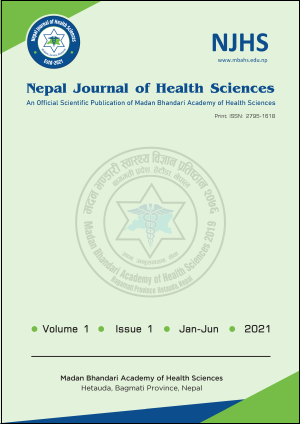Development and Optimisation of Mucoadhesive Films for Enhanced Drug Delivery in Treatment of Lichen Planus
DOI:
https://doi.org/10.3126/njhs.v1i1.38724Keywords:
Buccal films, clobetasol propionate, hydroxy propyl methyl cellulose, mucoadhesive, polyethylene glycol, solvent casting methodAbstract
Introduction: Mucoadhesive buccal films are most recently developed and preferred over buccal tablet because of the flexibility, better bioavailability, cost effectiveness, and good patient compliance it offers
Objective: The study aimed to formulate mucoadhesive films of Clobetasol Propionate with reduced side effects, controlled release and better patient compliance, suitable for the management of oral lichen planus.
Methods: Clobetasol Propionate Buccal Films were prepared by the incorporation of the Clobetasol Propionate along with polymers like Hydroxy Propyl Methyl Cellulose (HPMC) K4M, polyethylene glycol 400 and glycerol by solvent casting method.
Results: The drug content of all the formulations was found to be 85.04% to 93.14%. The swelling index of all formulations of Clobetasol Propionate mucoadhesive buccal film was found to be 82% to 94.07%. Formulation F14 which contains Hydroxy Propyl Methyl Cellulose K4M (1%), and polyethylene glycol 400 (1%) exhibited better results compared to other combination of polymers in different concentration. It showed swelling index of 94.07%. Drug content was found to be 91% and showed release of drug up to 95.05% in 12 hours. The optimised formula showed no significant changes on stability studies when stored at 40ºC/75% RH for three months.
Conclusions: The application of mucoadhesive buccal film containing Clobetasol Propionate appeared to be effective, avoiding the side effects and the data obtained in the study suggested that buccal films can be successfully designed to give controlled drug delivery.
Downloads
Downloads
Published
How to Cite
Issue
Section
License
Copyright (c) 2021 Manima Maharjan, Beny Baby, Sabina Sankhi, B.V.S. Anusha, Sujit Shrestha, Nirmal Raj Marasine

This work is licensed under a Creative Commons Attribution 4.0 International License.




